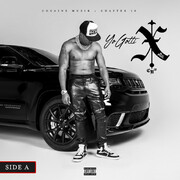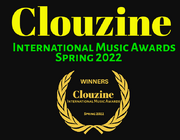New York, NY (Top40 Charts) After countless hours of composing and recording your music, you probably can't wait to send it out into the world for other people to hear it.
In the past, that included burning CDs and selling them at your concerts. But if you want people to find your music in the 21st century, you need to distribute it to Spotify instead.
Why it's imperative to have a presence on streaming services
Getting on digital storefronts and featured playlists today is a crucial promotional tool. Keep in mind that streaming services don't interact with artists directly. They have a dialogue mainly with representatives of labels and distributors.
Labels and distributors send a weekly list of releases that they recommend for playlists and storefronts. These can be albums that label management and aggregators think will shoot out, or other trending indie artists to promote at the moment.
The final word, in any case, rests with the platforms. Often the marketing managers of labels and distributors find out about the results of their work on Friday when the playlists are updated and it becomes clear whether or not a recommended track has been included in them.
However, an artist can get into streaming playlists without the participation of labels and distributors. Sometimes the streaming editors themselves pay attention to a track, but this process is often random. If you're an unsigned or independent musician, you need to find a music distributor to work with.
Fortunately, there are a number of ways to get on Spotify playlists via playlist curators. At SoundCampaign we have developed a system which allows us to find the most relevant playlists for a specific track and connect the relevant playlist curator with the music artists. This eases the whole process of music promotion on Spotify for talented artists, which can gain more followers and listeners for their track through placement on Spotify popular playlists.
How do music distribution services work?
Each music distribution service offers a different business model. But generally, you pay upfront or give up a certain percentage of your revenue to put your music on Spotify.
So you make money from your music through royalties, sales, and streaming fees.
You still have to own all of the copyrights to your music once you sign up for the music distribution service. But be sure to read the terms and conditions to be sure.
Most distributors make payments on a regular basis or after your income reaches a certain limit. However, don't expect to make a lot of money if you don't have thousands of streams per month.
Musicians' earnings depend on many factors. For example, Apple Music pays $0.0056 per stream, Spotify and Deezer pay $0.0032 and $0.00436 respectively. Those amounts may differ, though.
The amount of royalties depends on the subscription price for one or another streaming service. This means that the royalties received by musicians are lower in some regions. In addition, a number of platforms offer various types of paid subscriptions, such as Standart or the more expensive Premium. The amount of royalties, in this case, will depend on the rate of the subscriber who listened to the track.
The best distribution services show you an analysis of where, how often, and on which streaming services your music is playing.
You just need to sign up for a single distribution service for each music release. This service should make your music available everywhere, even if it may only be for a limited time.
For future releases, you can use the same service again or decline the service and try someone else.
The Case: Spotify is making direct deals with musicians — labels aren't happy
Streaming service Spotify has announced plans to pay musicians directly, "bypassing" labels. This has caused displeasure among record labels.
Spotify has offered significant sums to artists in exchange for direct licensing of their music. The fees on such deals are being counted in the hundreds of thousands of dollars.
Today, half of every dollar earned by the site goes to record companies, and another quarter is taken by the performer himself. By working directly with musicians, the company hopes to save on payments to labels and increase its income.
Indie labels' opinion
The streaming companys' statements about direct licensing drew a negative reaction from many independent labels. According to one indie label representative, such companies rely heavily on streaming revenue but have no control over Spotify.
Spotify has access to data that labels don't possess, which also gives the streaming service an advantage. On this basis, the service can make business decisions (invest in musicians) based not on guesswork, but on certain data — statistics on the listening habits of certain songs. Independent labels believe that if they continue not to be able to access this information, the situation in the market will only worsen.
Another advantage of Spotify is that the streaming platform doesn't require exclusive rights to the music it licenses. Artists retain the ability to sell their work on other platforms, which are owned by Apple, Google, and others.
Working with streaming platforms and receiving payments from listened-to tracks is one of the indie labels' main sources of income. So Spotify's direct deals with musicians threaten to make the latter's existence almost meaningless...
Remember to claim the rights to your artist account
Putting music on Spotify and Apple Music is just the first step. You should also make sure that you claim your artist account on these streaming services so that you can see updated stats for streaming your music.
Once you've applied for an artist account, you can post status updates, upload profile photos, and edit your artist bio.
























